- Accueil
- Pages cachées
- 28 FEVRIER 2024 NEWS
28 FEVRIER 2024 NEWS
INSTITUT SUPERIEUR D'ANTHROPOLOGIE
INSTITUTE OF ANTHROPOLOGY
ONLINE COURSES / COURS A DISTANCE
INSCRIPTIONS OUVERTES
REGISTER NOW
LITHUANIE – 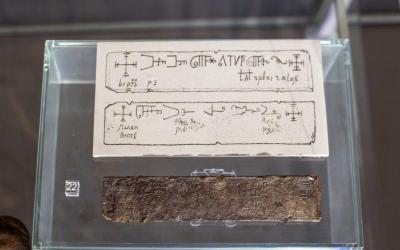 Vilnius - In the Museum of the Palace of the Grand Dukes in Vilnius, Lithuania, a mysterious lead tablet dating back to the 13-14 centuries with a script still undeciphered despite its discovery 20 years ago is on display. The mysterious plaque was found twenty years ago while exploring Vilnius castles. Archaeologists were using a metal detector to scout the location where some of the earliest wooden structures were located. They were expecting to find a treasure or a simple axe and were surprised when the large object turned out to be a rectangular metal strip of metal with strange engravings. The metal tablet, nineteen centimeters long, four centimeters wide, and almost half a centimeter thick, was found nailed to a wooden base. The mysterious plate has attracted the interest not only of Lithuanians but also foreign researchers. They tried to find out what could be written on it: could Lithuanians have had their a writing since ancient times and this is the first trace of such a possible writing? No examples of old Lithuanian writing, if any, have been found so far. Researchers searched avidly for analogs or similar symbols – and as the mysteries grew, it became clear that these were not random scribbles. “We tried to find a logical explanation for the markings: on the sides of the tablet, the beginning and the end were marked with crosses, as if they were marking the beginning and the end of the text,” said Gintautas Striška, head of the Archaeology and Architecture Department at the Palace of the Grand Dukes of Lithuania Museum in Vilnius. “The text is clearly composed of several lines. The top line seems to be written in two ways – signs and letters, and the bottom line has several more lines with various inscriptions,” he added. “At the time, we thought that part of the text may have been written in ancient Greek. With the help of linguists, we saw that part of it could be translated as ‘Algirdas Basileus’ – that is, ‘King Algirdas’,” said Striška. “The letters only resemble Greek letters, and a person who carved them may have missed something or combined several letters into one, making deciphering the record difficult,” he added. The lead tablet could refer to Grand Duke Algirdas, who ruled Lithuania from 1345 to 1377. According to Striška, the Byzantine emperor is known as Basileus, but Algirdas did not have such this title. In a letter to the Patriarch of Constantinople in 1370, he referred to himself as Basileus. It was an attempt to demonstrate that he was a sovereign ruler comparable to the Byzantine Emperor. “Therefore, such an inscription on the tablet is entirely plausible,” said Striška.“But the small plaque hides more secrets: when the restoration of the find began, it turned out that the reverse side of the plaque also had a writing.” The archaeologist says that many words are similar to names. There is a better preserved two-line inscription, where the incised letters can be read as Marem Byoyb. Several other entries next to it might also refer to names. The mysterious inscription was most likely written by more than one person. Smaller, somewhat different-looking hand-carved letters made of soft metal are located on the bottom, while meticulously engraved symbols and capital letters are located on the top. It is also possible that the inscriptions on the plate are engraved in several languages, making it difficult to read. The names inscribed on the tablet could be signatures of the participants in a trade agreement. According to the archaeologist, if such a version were to be confirmed, we would have one of the first names of merchants in Lithuania. When scientists could not find an answer, they stopped speculating and left this work for the future.
Vilnius - In the Museum of the Palace of the Grand Dukes in Vilnius, Lithuania, a mysterious lead tablet dating back to the 13-14 centuries with a script still undeciphered despite its discovery 20 years ago is on display. The mysterious plaque was found twenty years ago while exploring Vilnius castles. Archaeologists were using a metal detector to scout the location where some of the earliest wooden structures were located. They were expecting to find a treasure or a simple axe and were surprised when the large object turned out to be a rectangular metal strip of metal with strange engravings. The metal tablet, nineteen centimeters long, four centimeters wide, and almost half a centimeter thick, was found nailed to a wooden base. The mysterious plate has attracted the interest not only of Lithuanians but also foreign researchers. They tried to find out what could be written on it: could Lithuanians have had their a writing since ancient times and this is the first trace of such a possible writing? No examples of old Lithuanian writing, if any, have been found so far. Researchers searched avidly for analogs or similar symbols – and as the mysteries grew, it became clear that these were not random scribbles. “We tried to find a logical explanation for the markings: on the sides of the tablet, the beginning and the end were marked with crosses, as if they were marking the beginning and the end of the text,” said Gintautas Striška, head of the Archaeology and Architecture Department at the Palace of the Grand Dukes of Lithuania Museum in Vilnius. “The text is clearly composed of several lines. The top line seems to be written in two ways – signs and letters, and the bottom line has several more lines with various inscriptions,” he added. “At the time, we thought that part of the text may have been written in ancient Greek. With the help of linguists, we saw that part of it could be translated as ‘Algirdas Basileus’ – that is, ‘King Algirdas’,” said Striška. “The letters only resemble Greek letters, and a person who carved them may have missed something or combined several letters into one, making deciphering the record difficult,” he added. The lead tablet could refer to Grand Duke Algirdas, who ruled Lithuania from 1345 to 1377. According to Striška, the Byzantine emperor is known as Basileus, but Algirdas did not have such this title. In a letter to the Patriarch of Constantinople in 1370, he referred to himself as Basileus. It was an attempt to demonstrate that he was a sovereign ruler comparable to the Byzantine Emperor. “Therefore, such an inscription on the tablet is entirely plausible,” said Striška.“But the small plaque hides more secrets: when the restoration of the find began, it turned out that the reverse side of the plaque also had a writing.” The archaeologist says that many words are similar to names. There is a better preserved two-line inscription, where the incised letters can be read as Marem Byoyb. Several other entries next to it might also refer to names. The mysterious inscription was most likely written by more than one person. Smaller, somewhat different-looking hand-carved letters made of soft metal are located on the bottom, while meticulously engraved symbols and capital letters are located on the top. It is also possible that the inscriptions on the plate are engraved in several languages, making it difficult to read. The names inscribed on the tablet could be signatures of the participants in a trade agreement. According to the archaeologist, if such a version were to be confirmed, we would have one of the first names of merchants in Lithuania. When scientists could not find an answer, they stopped speculating and left this work for the future.
INDE – 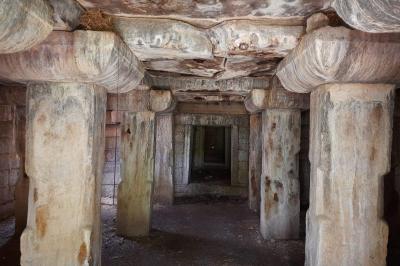
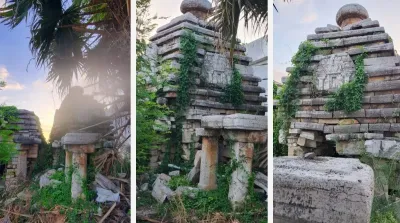 Mudimanikyam - Archaeologists from the Public Research Institute of History, Archaeology, and Heritage (PRIHAH) have announced the discovery of two temples dating from the Badami Chalukya era. Badami Chalukya was the foremost period of the Chalukya dynasty, a Hindu family lineage that ruled large parts of southern and central India between the 6th and the 12th centuries AD. The Badami Chalukyas started asserting their independence as the Kadamba kingdom of Banavasi declined, swiftly rising to prominence under the rule of Pulakeshin II, also known as Immadi Pulakeshi. The temples were found along the banks of the Krishna River near the village of Mudimanikyam, located in Nalgonda district in India’s southern state of Telangana. According to PRIHAH, both temples have been discovered in excellent preservation and date from between AD 543 to 750. They exhibit the Kadamba nagara style of architecture, with a pyramid shaped shikara with rising steps, topped by a pinnacle kalasha. Notably, the monuments also integrate features of Rekha nagara architecture, characterised by a typical northern Indian shikhara with a slightly curved tower having four sides of equal length. In one temple, researchers discovered a panavattam still in place within the sanctum sanctorum. However, the lingam, an abstract or aniconic representation of the Hindu god Shiva, was missing. In another temple, there lies an idol in dedication to the god Vishnu, also known as Narayana and Hari, one of the principal deities of Hinduism. Archaeologists also found an inscription on a pillar dating to the 8th or 9th century AD which reads “Gandaloranru”. Although the precise meaning of the inscription is uncertain, considering that the initial two letters ‘Ganda’ in Kannada signify ‘hero,’ it’s plausible that this could denote the title of a hero.
Mudimanikyam - Archaeologists from the Public Research Institute of History, Archaeology, and Heritage (PRIHAH) have announced the discovery of two temples dating from the Badami Chalukya era. Badami Chalukya was the foremost period of the Chalukya dynasty, a Hindu family lineage that ruled large parts of southern and central India between the 6th and the 12th centuries AD. The Badami Chalukyas started asserting their independence as the Kadamba kingdom of Banavasi declined, swiftly rising to prominence under the rule of Pulakeshin II, also known as Immadi Pulakeshi. The temples were found along the banks of the Krishna River near the village of Mudimanikyam, located in Nalgonda district in India’s southern state of Telangana. According to PRIHAH, both temples have been discovered in excellent preservation and date from between AD 543 to 750. They exhibit the Kadamba nagara style of architecture, with a pyramid shaped shikara with rising steps, topped by a pinnacle kalasha. Notably, the monuments also integrate features of Rekha nagara architecture, characterised by a typical northern Indian shikhara with a slightly curved tower having four sides of equal length. In one temple, researchers discovered a panavattam still in place within the sanctum sanctorum. However, the lingam, an abstract or aniconic representation of the Hindu god Shiva, was missing. In another temple, there lies an idol in dedication to the god Vishnu, also known as Narayana and Hari, one of the principal deities of Hinduism. Archaeologists also found an inscription on a pillar dating to the 8th or 9th century AD which reads “Gandaloranru”. Although the precise meaning of the inscription is uncertain, considering that the initial two letters ‘Ganda’ in Kannada signify ‘hero,’ it’s plausible that this could denote the title of a hero.
ALLEMAGNE – 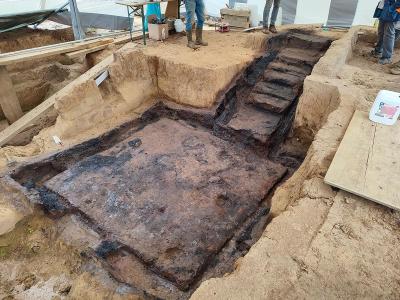 Frankfort - Archaeologists from the Frankfurt Archaeological Museum have recently uncovered a remarkably preserved wooden cellar in the Roman city of Nida in Frankfurt Situated in what is now Frankfurt’s modern districts of Heddernheim and Praunheim, Nida was a prominent Roman settlement. At the time of the Roman Empire, it was the capital of the Civitas Taunensium. The name of the settlement is known thanks to written sources from Roman times and probably derives from the name of the adjacent river Nidda. Nida probably had a population of 10,000 at its peak, during the first century AD, and was one of the largest Roman settlements in the Limes area. However, by AD 259 the population went into decline due to the Alemanni’s conquest of the Agri Decumates region. The wooden cellar was part of a Roman residential building, most likely built in the late first century AD on the southern side of Nida’s two main streets (Platea Praetoria). The cellar entrance faced south of the main street, and the burnt steps of the cellar staircase are still visible. Throughout the cellar, charred beams, charcoal, and fire debris bear witness to the destructive fire that once completely destroyed the house in antiquity. Some of the discoveries demonstrate the effects of the fire, such as a glass jar melted by the intense heat and iron utensils still lying on the cellar stairs. This demonstrates that the residents did not have time to save all of the movable objects from the cellar. The property was eventually rebuilt after the fire, but the cellar was no longer in use. To determine the exact date of the construction and destruction, the finds from the excavation must first be evaluated. The cellar is not the first to contain fire debris from the Roman Nida. Similar finds were discovered during excavations in the ancient city several times over the last century, but they were usually less well preserved and had not been examined as thoroughly using modern excavation methods.
Frankfort - Archaeologists from the Frankfurt Archaeological Museum have recently uncovered a remarkably preserved wooden cellar in the Roman city of Nida in Frankfurt Situated in what is now Frankfurt’s modern districts of Heddernheim and Praunheim, Nida was a prominent Roman settlement. At the time of the Roman Empire, it was the capital of the Civitas Taunensium. The name of the settlement is known thanks to written sources from Roman times and probably derives from the name of the adjacent river Nidda. Nida probably had a population of 10,000 at its peak, during the first century AD, and was one of the largest Roman settlements in the Limes area. However, by AD 259 the population went into decline due to the Alemanni’s conquest of the Agri Decumates region. The wooden cellar was part of a Roman residential building, most likely built in the late first century AD on the southern side of Nida’s two main streets (Platea Praetoria). The cellar entrance faced south of the main street, and the burnt steps of the cellar staircase are still visible. Throughout the cellar, charred beams, charcoal, and fire debris bear witness to the destructive fire that once completely destroyed the house in antiquity. Some of the discoveries demonstrate the effects of the fire, such as a glass jar melted by the intense heat and iron utensils still lying on the cellar stairs. This demonstrates that the residents did not have time to save all of the movable objects from the cellar. The property was eventually rebuilt after the fire, but the cellar was no longer in use. To determine the exact date of the construction and destruction, the finds from the excavation must first be evaluated. The cellar is not the first to contain fire debris from the Roman Nida. Similar finds were discovered during excavations in the ancient city several times over the last century, but they were usually less well preserved and had not been examined as thoroughly using modern excavation methods.
Roman Wooden Cellar Found in Frankfurt, Germany - Arkeonews
ALLEMAGNE – 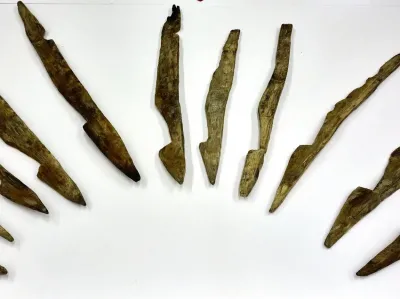 Bad Ems - In 2023, archaeologists from Goethe-Universität Frankfurt am Main uncovered a series of wooden defensive spikes during excavations of a 1st century AD Roman fort in Bad Ems, western Germany. The spikes were placed in ditches around the fort in a V-shape to serve as defensive barriers, which were found preserved in the water-logged soil of Blöskopf hill. No other examples of spikes have been found throughout the Roman world, however, they are referenced in Roman writings such as an account by Julius Caesar in his book, the “Gallic Wars”. Ceasar wrote: “Behind these he raised a rampart and wall twelve feet high; to this he added a parapet and battlements, with large stakes cut like stags’ horns, projecting from the junction of the parapet and battlements, to prevent the enemy from scaling it, and surrounded the entire work with turrets, which were eighty feet distant from one another.” The Romans established two military encampments that were first discovered in 2016, with further evidence of Roman smelting works. The spikes were uncovered in the smaller of the two encampments and likely extended throughout the entire downward tapering ditch. The larger encampment, designated as “Auf dem Ehrlich”, dates back to the early Roman imperial period, however, no traces of spikes were found during excavations. Archaeologists propose that the encampments were built to protect silver mining operations in the area, supported by historical records such as Tacitus’ Annals, which detail Emperor Claudius assigning the praetor, Curtius Rufus, to oversee silver extraction. Following a length preservation process, conservators from Goethe-Universität Frankfurt am Main have unveiled the Roman spikes for the first time at the Leibniz Centre for Archaeology in Mainz. “We owe these unusually well-preserved archaeological finds primarily to the oxygen-poor wet soil, which was covered by dense layers of sediment. In my 35 years of professional activity, I have never had to deal with such firmly attached sediment layers,” says Markus Wittköpper, wet wood preservation expert at LEIZA.
Bad Ems - In 2023, archaeologists from Goethe-Universität Frankfurt am Main uncovered a series of wooden defensive spikes during excavations of a 1st century AD Roman fort in Bad Ems, western Germany. The spikes were placed in ditches around the fort in a V-shape to serve as defensive barriers, which were found preserved in the water-logged soil of Blöskopf hill. No other examples of spikes have been found throughout the Roman world, however, they are referenced in Roman writings such as an account by Julius Caesar in his book, the “Gallic Wars”. Ceasar wrote: “Behind these he raised a rampart and wall twelve feet high; to this he added a parapet and battlements, with large stakes cut like stags’ horns, projecting from the junction of the parapet and battlements, to prevent the enemy from scaling it, and surrounded the entire work with turrets, which were eighty feet distant from one another.” The Romans established two military encampments that were first discovered in 2016, with further evidence of Roman smelting works. The spikes were uncovered in the smaller of the two encampments and likely extended throughout the entire downward tapering ditch. The larger encampment, designated as “Auf dem Ehrlich”, dates back to the early Roman imperial period, however, no traces of spikes were found during excavations. Archaeologists propose that the encampments were built to protect silver mining operations in the area, supported by historical records such as Tacitus’ Annals, which detail Emperor Claudius assigning the praetor, Curtius Rufus, to oversee silver extraction. Following a length preservation process, conservators from Goethe-Universität Frankfurt am Main have unveiled the Roman spikes for the first time at the Leibniz Centre for Archaeology in Mainz. “We owe these unusually well-preserved archaeological finds primarily to the oxygen-poor wet soil, which was covered by dense layers of sediment. In my 35 years of professional activity, I have never had to deal with such firmly attached sediment layers,” says Markus Wittköpper, wet wood preservation expert at LEIZA.
Roman defensive spikes unveiled at the Leibniz Centre for Archaeology (heritagedaily.com)
ISRAEL –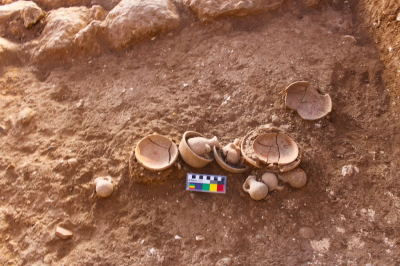
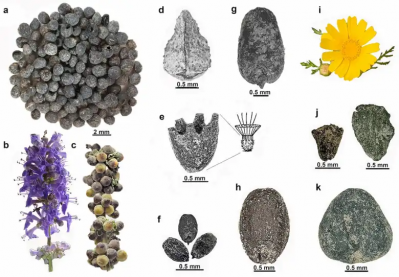
![]() Tell es-Safi/Gath - Bar-Ilan University researchers shed “unprecedented light” on Philistine ritual practices, such as the use of psychoactive and medicinal plants, by analyzing plant seeds and fruits from two temple excavation sites in Tell es-Safi/Gath, central Israel. The enigmatic Philistine culture, which flourished during the Iron Age (ca. 1200-604 BCE), profoundly affected the southern Levant’s cultural history, agronomy, and dietary customs. More than a quarter century of excavations at Tell es-Safi/Gath in central Israel, identified as the biblical Gath of the Philistines and the home of Goliath, has provided a unique window into the world of this ancient civilization. In the systematic excavation project of the temple area in the lower city of Gath, a team from Bar-Ilan University in Israel, led by Prof. Aren Maeir (archaeology) and Prof. Ehud Weiss (archaeobotany), has overseen the reconstruction of the plants used in Philistine rituals. Tel Zafit (Gath of the Philistines) is a national park under the auspices of the Israel Nature and Parks Authority. The new study published in Scientific Reports contributed “valuable new data” on the Philistine way of life, positing a connection to broader Mediterranean and specifically Greek religious traditions, through the practices and plants found in the area. Dr. Suembikya Frumin, under Prof. Ehud Weiss’s supervision, studied Philistine plant use in their temples as part of her PhD project. Together with Dr. Amit Dagan, Maria Eniukhina, and Prof. Aren Maeir, they delved into the plant assemblages discovered within the temples’ precincts, uncovering a wealth of information regarding the significance of various plant species in Philistine religious rituals. Through meticulous examination and quantitative and qualitative analysis of the types of plants used, the timing of their harvest, modes of offering, and potential symbolic significance, the researchers pieced together a clearer picture of the Philistine approach to spirituality. Dr. Suembikya Frumin, manager of the Archaeobotany Laboratory at Bar-Ilan University and the study’s lead researcher, noted, “One of the most significant findings is the identification of earliest known ritual uses of several Mediterranean plants, such as the lilac chaste tree (Vitex agnus-castus), crown daisy (Glebionis coronaria), and silvery scabious (Lomelosia argentea). These widespread Mediterranean plants connect Philistines with cultic rituals, mythology and paraphernalia related to early Greek deities, such as Hera, Artemis, Demeter, and Asclepios. In addition, plants with psychoactive and medicinal properties in the Philistine temples reveal their use for cultic activities. The study revealed that the Philistine religion relied on the magic and power of nature, such as running water and seasonality, aspects that influence human health and life.” Moreover, analysis of the temples’ seeds and fruits provided valuable insights into the timing of rituals, with the importance of the early spring for temple rites, and the date of the final utilization of the temples — and their destruction by Hazael of Aram – which occurred in late summer or early fall. The seasonal aspect of Philistine religious practices underscores their deep connection to the natural worlds and the cycles of agriculture. Prof. Ehud Weiss, Director the Archaeobotany Laboratory at Bar-Ilan University and co-author of the study, commented, “Our findings challenge previous understandings of Philistine ritual practices and offer a fresh perspective on their cultural practices, and the connections between Philistine culture and broader Mediterranean religious traditions. By examining the plants they used in ritual contexts, we better understand how the Philistines perceived and interacted with the world around them.” Furthermore, the study proposes intriguing parallels between Philistine and Aegean ceremonial practices. The discovery of loom weights (an apparatus used for fabric production) within Philistine temples, a common feature in Aegean cult locations associated with Hera, further strengthens the hypothesis of cultural exchange and influence between the two regions.“These findings open up new avenues for research into the cultural and religious interactions between the Philistines and neighboring regions,” added study co-author Prof. Aren Maeir, of Bar-Ilan University’s Martin (Szusz) Department of Land of Israel Studies and Archaeology, who has directed the excavations at Tell es-Safi/Gath for more than 25 years. “By employing advanced quantitative and qualitative analyses of plant assemblages, we have deepened our understanding of ancient cultic practices and their significance in the broader Mediterranean world.”
Tell es-Safi/Gath - Bar-Ilan University researchers shed “unprecedented light” on Philistine ritual practices, such as the use of psychoactive and medicinal plants, by analyzing plant seeds and fruits from two temple excavation sites in Tell es-Safi/Gath, central Israel. The enigmatic Philistine culture, which flourished during the Iron Age (ca. 1200-604 BCE), profoundly affected the southern Levant’s cultural history, agronomy, and dietary customs. More than a quarter century of excavations at Tell es-Safi/Gath in central Israel, identified as the biblical Gath of the Philistines and the home of Goliath, has provided a unique window into the world of this ancient civilization. In the systematic excavation project of the temple area in the lower city of Gath, a team from Bar-Ilan University in Israel, led by Prof. Aren Maeir (archaeology) and Prof. Ehud Weiss (archaeobotany), has overseen the reconstruction of the plants used in Philistine rituals. Tel Zafit (Gath of the Philistines) is a national park under the auspices of the Israel Nature and Parks Authority. The new study published in Scientific Reports contributed “valuable new data” on the Philistine way of life, positing a connection to broader Mediterranean and specifically Greek religious traditions, through the practices and plants found in the area. Dr. Suembikya Frumin, under Prof. Ehud Weiss’s supervision, studied Philistine plant use in their temples as part of her PhD project. Together with Dr. Amit Dagan, Maria Eniukhina, and Prof. Aren Maeir, they delved into the plant assemblages discovered within the temples’ precincts, uncovering a wealth of information regarding the significance of various plant species in Philistine religious rituals. Through meticulous examination and quantitative and qualitative analysis of the types of plants used, the timing of their harvest, modes of offering, and potential symbolic significance, the researchers pieced together a clearer picture of the Philistine approach to spirituality. Dr. Suembikya Frumin, manager of the Archaeobotany Laboratory at Bar-Ilan University and the study’s lead researcher, noted, “One of the most significant findings is the identification of earliest known ritual uses of several Mediterranean plants, such as the lilac chaste tree (Vitex agnus-castus), crown daisy (Glebionis coronaria), and silvery scabious (Lomelosia argentea). These widespread Mediterranean plants connect Philistines with cultic rituals, mythology and paraphernalia related to early Greek deities, such as Hera, Artemis, Demeter, and Asclepios. In addition, plants with psychoactive and medicinal properties in the Philistine temples reveal their use for cultic activities. The study revealed that the Philistine religion relied on the magic and power of nature, such as running water and seasonality, aspects that influence human health and life.” Moreover, analysis of the temples’ seeds and fruits provided valuable insights into the timing of rituals, with the importance of the early spring for temple rites, and the date of the final utilization of the temples — and their destruction by Hazael of Aram – which occurred in late summer or early fall. The seasonal aspect of Philistine religious practices underscores their deep connection to the natural worlds and the cycles of agriculture. Prof. Ehud Weiss, Director the Archaeobotany Laboratory at Bar-Ilan University and co-author of the study, commented, “Our findings challenge previous understandings of Philistine ritual practices and offer a fresh perspective on their cultural practices, and the connections between Philistine culture and broader Mediterranean religious traditions. By examining the plants they used in ritual contexts, we better understand how the Philistines perceived and interacted with the world around them.” Furthermore, the study proposes intriguing parallels between Philistine and Aegean ceremonial practices. The discovery of loom weights (an apparatus used for fabric production) within Philistine temples, a common feature in Aegean cult locations associated with Hera, further strengthens the hypothesis of cultural exchange and influence between the two regions.“These findings open up new avenues for research into the cultural and religious interactions between the Philistines and neighboring regions,” added study co-author Prof. Aren Maeir, of Bar-Ilan University’s Martin (Szusz) Department of Land of Israel Studies and Archaeology, who has directed the excavations at Tell es-Safi/Gath for more than 25 years. “By employing advanced quantitative and qualitative analyses of plant assemblages, we have deepened our understanding of ancient cultic practices and their significance in the broader Mediterranean world.”
MEXIQUE - 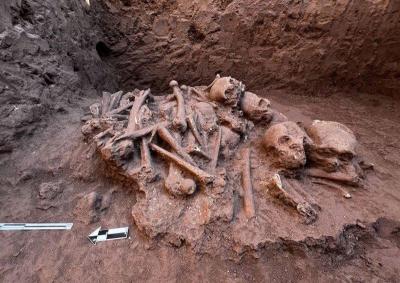 Pozo de Ibarra - Archaeologists from the National Institute of Anthropology and History in Mexico have uncovered human sacrifices from 500-800 A.D. in the town of Pozo de Ibarra The discovery of bones during the construction of a sewer network led archaeologists from the National Institute of Anthropology and History (INAH) to excavate a burial site where they also found a deposit of anatomically unrelated human bones and skulls in the town of Pozo de Ibarra, Mexico. The excavations revealed femur, tibia and ulna bones, as well as skulls that had been deliberately placed or stacked on top of each other. Some of at least seven complete skulls belonging to male individuals of different ages show evidence of skull modification, a cultural practice among Mesoamerican cultures that involved changing the shape of the skull for aesthetic purposes and possibly as a form of social distinction. The way the skeletons were arranged indicates the presence of certain ceremonial practices related to death in the region in pre-Hispanic times, archeology news channel Heritage Daily reported. The discovery is probably related to the Amapa cultural phase (500-800 A.D.) when the tomb also contained ceramic vessels and anthropomorphic figurines.
Pozo de Ibarra - Archaeologists from the National Institute of Anthropology and History in Mexico have uncovered human sacrifices from 500-800 A.D. in the town of Pozo de Ibarra The discovery of bones during the construction of a sewer network led archaeologists from the National Institute of Anthropology and History (INAH) to excavate a burial site where they also found a deposit of anatomically unrelated human bones and skulls in the town of Pozo de Ibarra, Mexico. The excavations revealed femur, tibia and ulna bones, as well as skulls that had been deliberately placed or stacked on top of each other. Some of at least seven complete skulls belonging to male individuals of different ages show evidence of skull modification, a cultural practice among Mesoamerican cultures that involved changing the shape of the skull for aesthetic purposes and possibly as a form of social distinction. The way the skeletons were arranged indicates the presence of certain ceremonial practices related to death in the region in pre-Hispanic times, archeology news channel Heritage Daily reported. The discovery is probably related to the Amapa cultural phase (500-800 A.D.) when the tomb also contained ceramic vessels and anthropomorphic figurines.
Mexican archaeologists uncover traces of ancient human sacrifices - Turkiye Newspaper
TURQUIE 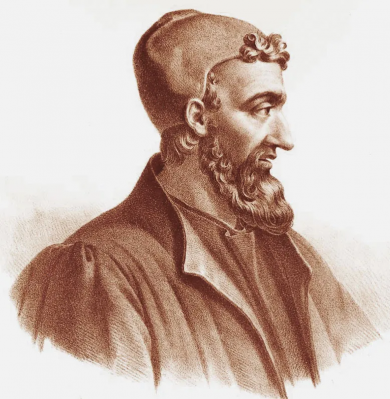 –Izmir - As a part of research on medicinal plants in Bergama, İzmir’s historic district where Galen (129 AD -200 AD) once resided, academics from Ege University are investigating the contributions of the renowned ancient Roman physician’s prescriptions over the years. Galen (Galēnos) was one of the most prominent ancient physicians as well as a philosopher. In addition to his title as the father of pharmacy, Galen is also the first sports physician of the Roman world. His medical, and in some cases philosophical, work had a huge impact throughout the medieval period and even later, both in Europe and elsewhere. His position as the leading authority in medical theory extended for at least fourteen hundred years. As part of a study conducted by the University of Ege to investigate how plants have been used by humans for centuries, Dr. Şükrü Arasan visited villages in the region and spoke to locals to compare the herbal prescriptions recorded in the Bergama region with those of Galen’s. Doctor Şükrü Arasan and his team’s research has led them to local communities where the use of plants in medicine is still a living tradition. By comparing the herbal remedies created by these villagers to those documented by Galen, the researchers unearthed an intriguing continuity. The study reveals that 160 different plant species are still in use, with approximately 130 of these employed for therapeutic purposes. “The most prominent subject in our study was plants used in traditional folk medicine. One treatment that surprised us was the use of henbane seeds against the larvae of myiasis flies. The seeds of the henbane plant are mixed with animal tallow or tail fat and different processes are applied to produce smoke. The patient’s face is exposed to the smoke and the fly larvae are observed to fall into a bowl of water under the chin,” Dr. Arasan shared. This is undoubtedly a testament to the innovative and practical applications of these ancient prescriptions. Emphasizing the importance of dosage when using plants as traditional medicine, Professor Hasan Yıldırım at Ege University’s Department of Biology, said, “We are studying Galen’s formulas. his specialty is hidden in the doses of his formulas. For example, it is said to ‘drink sage tea.’ But how much should you drink? The use, effect, dose, and side effects of each plant are different. A small amount of many herbal active substances is medicinal, but too much of it may be poisonous.”This delicate balance emphasizes the need to recognize and honor the power of natural remedies in addition to the wisdom of age-old customs. The study of Galen’s formulas serves as a reminder of the complex relationship between nature and health, a never-ending dialogue between the past and present.
–Izmir - As a part of research on medicinal plants in Bergama, İzmir’s historic district where Galen (129 AD -200 AD) once resided, academics from Ege University are investigating the contributions of the renowned ancient Roman physician’s prescriptions over the years. Galen (Galēnos) was one of the most prominent ancient physicians as well as a philosopher. In addition to his title as the father of pharmacy, Galen is also the first sports physician of the Roman world. His medical, and in some cases philosophical, work had a huge impact throughout the medieval period and even later, both in Europe and elsewhere. His position as the leading authority in medical theory extended for at least fourteen hundred years. As part of a study conducted by the University of Ege to investigate how plants have been used by humans for centuries, Dr. Şükrü Arasan visited villages in the region and spoke to locals to compare the herbal prescriptions recorded in the Bergama region with those of Galen’s. Doctor Şükrü Arasan and his team’s research has led them to local communities where the use of plants in medicine is still a living tradition. By comparing the herbal remedies created by these villagers to those documented by Galen, the researchers unearthed an intriguing continuity. The study reveals that 160 different plant species are still in use, with approximately 130 of these employed for therapeutic purposes. “The most prominent subject in our study was plants used in traditional folk medicine. One treatment that surprised us was the use of henbane seeds against the larvae of myiasis flies. The seeds of the henbane plant are mixed with animal tallow or tail fat and different processes are applied to produce smoke. The patient’s face is exposed to the smoke and the fly larvae are observed to fall into a bowl of water under the chin,” Dr. Arasan shared. This is undoubtedly a testament to the innovative and practical applications of these ancient prescriptions. Emphasizing the importance of dosage when using plants as traditional medicine, Professor Hasan Yıldırım at Ege University’s Department of Biology, said, “We are studying Galen’s formulas. his specialty is hidden in the doses of his formulas. For example, it is said to ‘drink sage tea.’ But how much should you drink? The use, effect, dose, and side effects of each plant are different. A small amount of many herbal active substances is medicinal, but too much of it may be poisonous.”This delicate balance emphasizes the need to recognize and honor the power of natural remedies in addition to the wisdom of age-old customs. The study of Galen’s formulas serves as a reminder of the complex relationship between nature and health, a never-ending dialogue between the past and present.
Academics Uncover Ancient Roman Physicians Galen’s Pharmacy Legacy in İzmir - Arkeonews
SOUDAN – 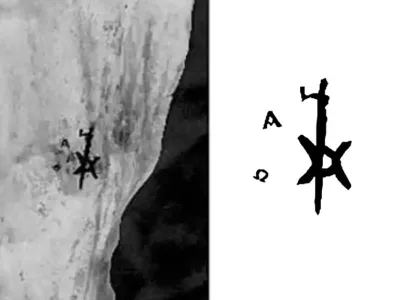 Ghazali - A 1,300-year-old body discovered in Sudan has revealed an ancient “Christ tattoo” on the right foot of the remains. The body was discovered by scientists near the medieval Ghazali monastery There were four cemeteries at the site, with hundreds of graves. This particular body was taken to the Polish Centre of Mediterranean Archaeology at the University of Warsaw for examination. Kari A. Guilbault of Purdue University discovered the tattoo, which is in the form of a “Christogram.” According to the release, a Christogram “is a religious symbol combining the Greek letters ‘chi’ and ‘rho’ to form a monogram abbreviation for the name of Christ.” The tattoo also contained the letters for “alpha” and “omega,” “beginning” and “end,” a reference to God as the beginning and end of all things. Dr. Robert Stark, head of the bioarchaeological study of the remains, believes the tattoo may be the symbol of the person’s spiritual journey. The find is significant because only one other tattoo has been discovered from medieval Sudan. Stark also believed that the location of the tattoo hints that it was meant to be a private proclamation of the bearer’s faith. Another interesting thing about the tattoo is that the remains are believed to belong to a man. Prior to this discovery, all religious tattoos had been found on women. The Daily Mail that such tattoos give fascinating insights about the bearer. “One of the big questions is how can we tell someone was religious and this is one of those tangible markers of their Christian faith. This is a really fine example of how a person’s faith was a part of their life and their body,” she said. Scientists believe the individual lived between 667 and 774 AD and was between the ages of 35 and 50 at the time of his death. It is unclear if the individual was a monk as he was found in a cemetery separate from the monks.
Ghazali - A 1,300-year-old body discovered in Sudan has revealed an ancient “Christ tattoo” on the right foot of the remains. The body was discovered by scientists near the medieval Ghazali monastery There were four cemeteries at the site, with hundreds of graves. This particular body was taken to the Polish Centre of Mediterranean Archaeology at the University of Warsaw for examination. Kari A. Guilbault of Purdue University discovered the tattoo, which is in the form of a “Christogram.” According to the release, a Christogram “is a religious symbol combining the Greek letters ‘chi’ and ‘rho’ to form a monogram abbreviation for the name of Christ.” The tattoo also contained the letters for “alpha” and “omega,” “beginning” and “end,” a reference to God as the beginning and end of all things. Dr. Robert Stark, head of the bioarchaeological study of the remains, believes the tattoo may be the symbol of the person’s spiritual journey. The find is significant because only one other tattoo has been discovered from medieval Sudan. Stark also believed that the location of the tattoo hints that it was meant to be a private proclamation of the bearer’s faith. Another interesting thing about the tattoo is that the remains are believed to belong to a man. Prior to this discovery, all religious tattoos had been found on women. The Daily Mail that such tattoos give fascinating insights about the bearer. “One of the big questions is how can we tell someone was religious and this is one of those tangible markers of their Christian faith. This is a really fine example of how a person’s faith was a part of their life and their body,” she said. Scientists believe the individual lived between 667 and 774 AD and was between the ages of 35 and 50 at the time of his death. It is unclear if the individual was a monk as he was found in a cemetery separate from the monks.
“Christ tattoo” Discovered on 1,300-Year-Old Body (beliefnet.com)
ANGLETERRE – 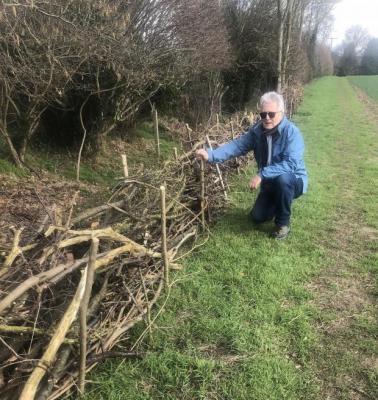 Hadleigh - A six-month community campaign has helped safeguard Hadleigh’s medieval track. Archivists at the society then made an incredible discovery - that the track, known as a Holloway, dates from the late medieval period and has been known as Bacon Lane for 500 years.
Hadleigh - A six-month community campaign has helped safeguard Hadleigh’s medieval track. Archivists at the society then made an incredible discovery - that the track, known as a Holloway, dates from the late medieval period and has been known as Bacon Lane for 500 years.
Local action helps protect Hadleigh’s medieval Bacon Lane | East Anglian Daily Times (eadt.co.uk)



